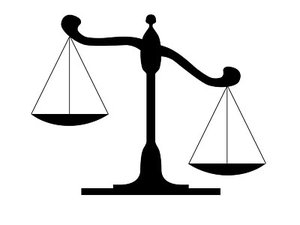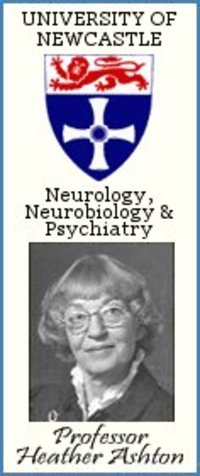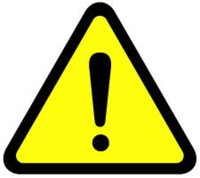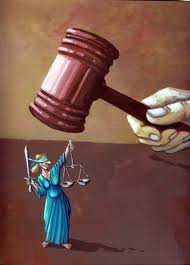Justice or Not?

Note
- This section focuses on some of the apparent injustices of the Japanese courts in my case. To help highlight these, some parts of this section include cross-referencing between the High Court Verdict and the Addiction Reports which were all based on the official evidence and the DSM-IV-TR diagnostic criteria for dependency.
- The judge made it clear that he would only accept arguments based on credible evidence, and subsequently, all information submitted to the courts and contained in this website is exactly so (non-evidential aspects were never included at any stage).
- The consistency and credibility of the reports in relation to the evidence (patient files) was clarified in article 3.4 of Addiction Report Three).
- Diagnostics excluded: 3 criterions were ignored in the verdict resulting in a failure to rule out the fact I was dependent in terms of the DSM-IV-TR which formed the overall basis for the entire case.
- Misquoting evidence: The High Court verdict stated “...the only written information contained in the package insert of the benzodiazepine type drugs is that it is possible for drug dependency to form on high repeated doses” However, also stated was “high or repeated doses.”
- Clinical information ignored: E.g. no prior neurological or psychological history, a series of failed attempts at stopping or reducing; ability to work before the drugs, work incapacitation following treatment, ability to return to work again after stopping etc.
- Selective symptom analysis: The judgment was based on a simple analysis of select symptoms that had been largely cut, misinterpreted or taken out of context.
- Withdrawal symptoms excluded: New symptoms recorded at the withdrawal facility during reduction were completely ignored. E.g. Myoclonic jerks, loss in coordination, paresthsia over face, tightness in cranial (feeling of tight band around head), oily smell emanating from body – glandular reactions etc.
- Facts misrepresented: The court concluded that because the dosage of BZs I was prescribed remained the same throughout the treatment, without any apparent efforts to seek dose increases, this showed that I had not developed tolerance and was therefore not dependent. However, this notion was a complete misrepresentation of our claim. That is: tolerance was manifested by a withdrawal reaction during the treatment; not a craving to increase dosages. This is the reason why the DSM-IV-TR Criterion 4 (Loss of Control) was applied but was ignored in the verdict.
- Unscientific term (diagnosis) employed: Despite the term Autonomic Nervous Disorder having no actual medical / scientific grounds for ruling out drug dependency, the courts accepted it as the determining factor in ruling out my case.
- Contextual facts ignored: E.g. the AND diagnosis only came after 6 months of BZs – never before.
- Relevance ill-considered: BZ dependency actually causes stress / anxiety and hyper-function of the autonomic nervous system and associated symptoms (so-called AND).
- Biased information employed: Drug company package inserts (full of inadequacies) used to determine dosage at which BZs could be deemed addictive.
- Credible evidence ignored: Expert opinions stating that dependency can, and does, develop on clinical doses if used for more than 2-4 weeks.
- Key witness denied testimony: Clinical Director and diagnosing doctor (twice without clear reason).
- Informed consent irrational: The judge never questioned the contradiction between the defendant doctor’s original diagnosis of “Sylvian Aqueduct Syndrome” and his prescribed drugs. Not to mention the fact the defendant doctor began claiming a totally new diagnosis (AND) for the first time only after court proceedings had begun.
- Monitoring irrational: The judge failed to distinguish between routine tests for checking balance functions and tests for checking the potential forming of drug dependency.
- Faulted proceedings: The original Chief Justice was replaced part way through proceedings by another Chief Justice who knew absolutely nothing about the case or BZ.
- Facts overlooked: One notable point in my case was that my health condition continued to improve even whilst being exposed to the most intense stress imaginable during court proceedings. This fact puts paid to the defense’s claim that my condition was simply caused by anxiety/stress alone and that I was prone to such. The reason being is that someone who is simply suffering from stress and prone to it wouldn’t be improving under increasingly stressful circumstances. It simply does not stand to reason. This was not considered in the verdict either.
- Final plea: In the very last sentence of my final statement, I posed the question “Why do you honestly think I ended up in a drug rehabilitation centre following 9 months of highly addictive BZ prescriptions?” The case closed without any response.
What do the world's 2 leading experts say?
Nearly all Wayne Douglas’s symptoms during BZ treatment, dosage reduction and withdrawal (recorded in Dr. Judson’s report) are due to dependence and symptoms of autonomic overactivity, which is common in these circumstances. Professor Heather Ashton. Emeritus Professor of Clinical Psychopharmacology, University of Newcastle upon Tyne, England.
Dear Wayne, You were certainly subject to judicial mishandling of your case! I greatly sympathise with you. Yours sincerely, Professor Malcolm Lader. O.B.E., LL.B., Ph.D., M.D., D.Sc., F.R.C. Psych., F. Med Sci. Emeritus Professor of Clinical Psychopharmacology.
Top of Page
I think the ultimate discrepancy in the High Court Verdict is that the Judge failed to rule out the fact I was dependent in terms of the DSM-IV-TR (worldwide recognized diagnostic standard) which formed the overall basis for the entire case.
My claim was that I met 5 out of the 7 Criteria, for which only 3 need to be met in order to determine dependence (See Article 2.3 of Addiction Report One).
Although the Judge addressed two of the criteria in tolerance (criteria 1) and withdrawal (criteria 2), albeit without any direct reference to the DSM-IV-TR itself, he completely failed to address the other three that were being claimed – effectively leaving them standing.
These are: Criteria 4 – Loss of Control, Criteria 6 – Impact on Life, Criteria 7 – Continued Use Despite Knowledge of Harm (See Section Two of Addiction Report Three).
As only 3 criteria need to be met to determine a diagnosis for dependence, the judge clearly made a significant technical error, and in doing so, failed to rule out the fact I (the appellant) was clinically benzodiazepine dependent in terms of the DSM-IV-TR.
Top of Page
Note
Despite claims from the defense in article 2.3.2-A of the verdict (“The DSM-IV-TR diagnostic criteria for substance dependency is only applied to case examples where the substance includes cocaine, alcohol, and tobacco…”), the DSM-IV-TR diagnostic criteria can in fact be applied to diagnosing dependence to prescription drugs, including benzodiazepines, which was confirmed in a letter from Dr. Judson.
The basis for the high court's judgment was centred mainly on the tolerance and withdrawal arguments. It stated that it could not be proven I was benzodiazepine dependent because the symptoms we were claiming as being attributable to tolerance, withdrawal and/or side-effects from the drugs could also be “symptoms of autonomic nervous disorder.”
In other words, the judge sided with the defense’s claim that I had an underlying symptomatic stress/anxiety disorder and this, not the tolerance and withdrawal effects from the drugs, was the cause of the symptoms.
In forming the basis for the decision regarding the tolerance and withdrawal argument, the judge selected only 5 symptoms with only 2 of them being relevant to tolerance, withdrawal and/or side-effects. These were: sensitivity to heat and mouth ulcers.
However, this was a total misrepresentation of our claim which was that about 20 or more “new symptoms” appeared for the first time during the treatment.
Article 2.1.3 of Addiction Report Three shows 2, including palpitations, and 12 in article 2.2.3. These are denoted by the word “New”.
Others included emotional instability (panic attacks, mood swings etc) as shown in article 1.4.7 of Addiction Report One (The nature of the emotional instability was explained in articles 2.4.5 ~ 2.4.8 of Addiction Report Four).
New visual symptoms were also outlined in article 3.3.12 of Addiction Report Four.
As Dr. Judson indicated in article 2.2.4 of Addiction Report Three, the fact that they were “new” was proven by the fact there was no record of them in any of the patient files prior.
In the verdict, the judge failed to analyze the symptoms within context. Namely, (A) Those associated with the previous stress, (B) Those associated with the original complaint of vertigo, (C) Those associated with the anxiety over the undiagnosed vertigo and (D) Those associated with benzodiazepine dependency when forming the basis for his decision.
In addition, the court concluded that because the dosage of benzodiazepines I was prescribed remained the same throughout the treatment, without any apparent efforts to seek dose increases, this showed that I had not developed tolerance and was therefore not dependent.
However, this notion was totally contrary to our claim. That is: tolerance was manifested by a withdrawal reaction; not a craving to increase dosages. In fact, I was actually trying to reduce but was unable to do so, as outlined in article 1.5.1 of Addiction Report Four (Reduction Attempts).
This is the reason why the DSM-IV-TR Criterion 4 – Loss of Control was applied but was ignored in the verdict.
The High Court Judge backed his decision that tolerance did not occur by supporting an earlier issue which had initially been raised unfairly in the lower court (this issue was raised in the defense’s favour by the Tokyo District Court Judge after the lower court proceedings had concluded which denied us any opportunity for rebuttal).
To be more specific, the courts alleged that, because there were certain months where the number of prescription doses fell short of the next top-up prescription date, there must have been times when I was able to go without drugs, and therefore, could not have been benzodiazepine dependent.
However, after appealing to the Tokyo High Court, it was since proven, based on the evidence (prescription forms, dispensary forms, receipts and patient files), that it was in fact possible for me to have made it through those times by way of having accrued a surplus earlier in the treatment.
This had been clearly explained (with an entire breakdown of all prescription doses) in article A of my Statement 3 and in article 3.2 of Addiction Report Three.
Top of Page

Another issue of contention was whether the daily dosage of benzodiazepines I was being prescribed was high enough to result in dependency. To make a ruling on this, the judge relied on the packaging produced by the pharmaceutical companies to determine the dosage at which benzodiazepines could be deemed addictive.
In doing so, he chose to ignore the extensive literature and credible evidence submitted to the courts stating the fact that benzodiazepine dependency can and does indeed develop on clinical doses if they are used regularly for longer than 2-4 weeks.
The evidence included papers from:
- Prof. Ashton, who is a world leader in benzodiazepine dependency
- A reference from her contained in article 2.1 of Addiction Report Three
- Other literature from Japanese sources including a paper written by Prof. Murazaki of Kitasato University titled “Benzodiazepine Dependency on Clinical Doses”
Misquoting evidence (package inserts)
If it wasn’t bad enough that the judiciary employed unreliable (biased) evidence in the first instance (packaging produced by the pharmaceutical companies), they also totally misquoted the content.
The High Court verdict stated: “...the only written information contained in the package insert of the benzodiazepine type drugs... is that it is possible for drug dependency to form on high repeated doses, and there is no written information relating to the possibility of developing drug dependency on clinical doses... therefore... the development of dependency to prescription doses of benzodiazepine type drugs cannot be recognized as established medical knowledge in our country.”
However, the package insert additionally stated: “Also, withdrawal symptoms can appear; including... when either stopping or reducing too quickly from high or repeated doses.”
Noting the inclusion of the word “or,” the later states that withdrawal symptoms can also appear due to continued use alone which therefore, also means that dependency can occur on clinical doses. NB: Withdrawal reactions cannot occur without being in a state of physiological dependency. Therefore, this ambiguous package insert is basically saying (in a roundabout way) that dependency can occur on repeat prescriptions (so-called clinical doses).
From Prof. Ashton: “Tolerance and dependence can develop if benzodiazepines are used regularly for longer than 2-4 weeks. There is no minimum dose, for example tolerance and dependence have been observed after the regular use of 2.5-5mg of diazepam.”
Top of Page

In clause 2.3.1 B of the verdict the judge implied we were claiming “informed consent” as being the need for the doctor to inform the patient that there is the possibility of side-effects and to report if something is wrong.
He additionally implied we were claiming “monitoring” as being the need for the doctor to avoid prescribing for more than 6 months in cases where no therapeutic effects can be seen.
Both these definitions were overly simplified and largely cut down. Proper definitions had been clearly explained in Section 4 of Addiction Report Four.
Apart from needing to prove the fact I was benzodiazepine dependent, “Informed consent” and “monitoring” were also key factors in the case because they determine whether or not negligence was involved which is needed to prove accountability (cause and effect). Without it, there is no case.
The evidence clearly shows that there was no informed consent because the doctor’s diagnosis of “Sylvian Aqueduct Syndrome” was in complete contradiction to the drug prescriptions.
Similarly, the fact there was never any monitoring for potential drug dependency was made clear by the fact there was no records of such in the patient file.
Throughout the verdict, the Judge continuously made reference to “routine tests” carried out by the defendant supporting the doctor’s claim that I couldn’t have been dependent because the “routine tests” didn’t reflect this.
However, all these “routine tests” were related to dizziness only (caused by the so-called “Sylvian Aqueduct Syndrome”) and all records clearly showed there was never any testing done for the purpose of potential drug dependency.
This issue had been clearly highlighted in Section 4 of Addiction Report Four.
Top of Page

When I first lodged for proceedings, I was of the understanding that it just would be a simple case of proving whether I wasdependent to benzodiazepines or not.
However, due to the influences of the defense and the direction determined by the court, it ended up being a case of proving whether my symptoms were caused by benzodiazepine dependency or “Autonomic Nervous Disorder” (Symptomatic stress/anxiety related condition).
The High Court Judge said he could not accept my claim because the symptoms could also be “symptoms of autonomic nervous disorder.” In other words, the High Court deemed it was not possible to differentiate between whether the symptoms were caused by prescription drug dependency or an underlying stress/anxiety disorder.
However, in response to an earlier question from the court about how to differentiate, the Clinical Director of the drug and alcohol detoxification facility clearly explained in article 3.3 of Addiction Report Three how a differential diagnosis can be made.
This included analyzing the symptoms within context of all the applied DSM-IV-TR criteria and the overall clinical picture noting symptom trends such as initial settling, relapses, worsening (changes in intensity, frequency, duration, nature), new symptoms, later improvements and so on.
In addition to arguments provided on tolerance, withdrawal, side-effects, symptom patterns etc. there was extensive information provided on all the applied DSM-IV-TR criteria together with the overall clinical picture which formed the overall context of the case and included:
- No previous history of neurological or psychological complaints
- The dosages and duration alone were enough to determine at least a 50~100% chance of dependency having formed (See article 1.3.2 of Addiction Report Three)
- Benzodiazepine dependency causes stress/anxiety, hyper-function of the nervous system and associated symptoms
- Many new symptoms developed during the treatment (Tolerance & Withdrawal)
- Only diagnosed with Autonomic Nervous Disorder (Symptomatic Stress/Anxiety Disorder) after 6 months of benzodiazepines – never before
- There was a series of unsuccessful attempts at stopping or reducing (Loss of Control), (Reduction Attempts)
- Changed hospitals after 6 months in an attempt to escape the treatment
- There was an array of social impacts (Impact on life)
- Continued taking the prescribed drugs despite showing an awareness that they were causing harm (Continued Use Despite Knowledge of Harm)
- Was still able to work in Japan before the treatment, but after the treatment was unable to complete the last week of employment contract before returning to New Zealand and being incapacitated from work for over one year
- Spent more than a year in rehabilitation at a drug and alcohol detoxification facility
- Developed more new withdrawal symptoms during the reduction program (Withdrawal)
- Recovered from all symptoms, including those associated with original complaint, within a year of stopping the prescribed drugs (although some took a little longer due to protracted withdrawal)
- Went from a sick 64kgs in weight and barely able to walk to 84kgs of lean muscle, squatting 180kgs, benching 100kgs (later 120kgs) and doing 10 hour hikes in mountains
- Was able to restore all physical and mental functions after stopping the drugs including returning to live and work in Japan again
- Was able to maintain a much better state of health and continue functioning in Japan despite being under considerably more stress than ever before from the ongoing case for compensation
*All these facts were backed by the evidence including patient file entries, witness statements etc (See case Section).
However, the High Court verdict basically ignored all of this, resulting in 3 of the DSM-IV-TR criteria going completely unaddressed, and nothing being considered within context of the overall clinical picture, despite the diagnostic cautions that had been clearly outlined in article 1.2 of Addiction Report Three.
It was additionally claimed that I was suffering from an inherent chronic anxiety disorder and that I had a predisposition to stress/anxiety disorders.
However, the Clinical Director of the drug and alcohol detoxification facility concluded that this was not the case based on points (1), (5), (13), (15), (16) above.
Top of Page
Important Point
One notable point was that my condition continued to improve even whilst being exposed to the most intense stress imaginable during court proceedings which was highlighted in article 3.1.9 of Addiction Report Three.
This fact puts paid to the defense’s claim that my condition was simply caused by anxiety/stress alone and that I was prone to such.
The reason being is that someone who is simply suffering from stress and prone to it wouldn’t be improving under increasingly stressful circumstances. It simply does not stand to reason.
However, this fact was not included in the High Court Verdict.
In clause 3 of the verdict, the Judge repeatedly supports a claim made by the defense that my condition was caused by “Autonomic Nervous Disorder”.
“Autonomic Nervous Disorder” is a diagnostic term commonly used in Japan to describe: (A) Psychosomatic symptoms caused by a variety of stress / anxiety conditions, or (B) Any other condition where the Autonomic Nervous System acts in a way that produces symptoms, especially in cases where they are not sure of the cause.
The irony here is that benzodiazepine dependency actually causes both the above with the autonomic system becoming hyperactive.
Therefore, the court’s willingness to accept this loose fitting term as a credible counter argument is, not only fundamentally wrong, but also gives way to significant room for error, confusion and misjudgment. To use an expression from Prof. Ashton, it is yet another example of “muddled thinking”.
Further, the court failed to consider the fact that the “Autonomic Nervous Disorder” diagnosis was only made for the very first time following about 7 months of benzodiazepine prescriptions and never before.
As Prof. Ashton has confirmed “Benzodiazepines affect the whole nervous system, both the central nervous system and the autonomic (sympathetic and parasympathetic) nervous system which is controlled by the CNS (Central Nervous System)”. The initial effect is to decrease nervous system activity but with regular use, the whole system becomes hyperactive due to the development of tolerance (See appendix 5 A of Supreme Court Appeal).
She adds “The autonomic nervous system responds to anxiety and stress from any cause. Benzodiazepine tolerance, dependence and withdrawal all cause stress and anxiety, so the response of the autonomic nervous system is the same as its response to any other type of anxiety” (See appendix 5 D of Supreme Court Appeal).
Admittedly, the above comments from Prof. Ashton were only made available after the High Court verdict was handed down, however, Dr. Judson did explain that dependency can produce the very symptoms they are designed to treat, i.e. anxiety symptoms, and gave a detailed explanation on how to differentiate between mere symptoms of stress and those of benzodiazepine dependency in article 3.3 of Addiction report Three.
This clearly wasn’t considered by the Judge in the verdict at all.
Top of Page

Our key witness, Dr. Judson (specialist in addictive medicine), was twice denied the opportunity to testify (District and High Courts) and therefore was unable to further explain and clarify the arguments contained in his reports, nor was there any opportunity for him to question the defense.
Dr. Judson was the diagnosing doctor and the only party involved in this case who was qualified / experienced in the field of addictive medicine.
Top of Page

The following extracts, taken from periodic reports from my lawyer at the time, may help to reflect the general attitudes of the judges who presided over my case:
Below is a report extract from the first scheduled court hearing date held on December 1st, 2009 at 10:30am in the Court Secretary’s Office (F16) of Civil Section 9 at the Tokyo High Court.
“The judiciary will consist of 3 judges. On this occasion one of them (possibly the left-hand associate judge) came out and asked various questions. This judge had not studied the case at all, and he had not gone over any of the records”. “I have never come across a judge as unprepared as him ever before”.
Below is another report extract from the fourth court hearing (third lawyer’s debating session) held on March 25th, 2010 at 11:40am.
“Unlike the presiding judge, the left-hand associate judge does not show the ability to cut to the chase as far as directing proceedings is concerned, so there’s little wonder it’s going to drag out for a while. However, if Chief Justice Takaki ends up being transferred, we’ll have no choice in the matter. We’ll just have to wait and see how the replacement Chief Justice comes out which leaves me feeling a little anxious.”
“Chief Justice Takaki’s approach of trying to see through to the nerve centre of the case was very distinguished, not like the approach of the left-hand associate judge who comes across as if to say “You guys lost the first court case - what makes you think you going to win this time?” and other such meaningless cheap shots. Not all judges are like that.”
Further to the above, we were never given sufficient time to prepare documentation with the courts seemingly not making any allowances for the need to work between 2 different languages and 2 countries. Instead they continued to set deadlines suitable for local cases in 1 language.
This had been brought to the court’s attention in both article L of my Statement 3 and in article 3.5.4 of Addiction Report Three, but there were never any accommodations made.
As a result, many of the documents submitted ended up containing translation errors and many of the expressions differed from those contained in the original English. This ended up causing a significant and general lowering of the quality of the report translations to the extent where it could have caused some misunderstandings. (See Translation Errors)
Top of Page

As shown above (DSM-IV-TR Application) the judge failed to address 3 of the criterions applied in my case. These were: Criterion 4 – Loss of Control, Criterion 6 – Impact on Life, Criterion 7 – Continued Use Despite Knowledge of Harm.
Criterion 4 was fulfilled based on a series of unsuccessful attempts at stopping or reducing. Criterion 6 was fulfilled based on work incapacitation following the treatment, loss in ability to socialize, relationship difficulties, difficulties with romance, and a reduction in ability to take part in recreational activities. Criterion 7 was fulfilled based on my complaints to doctors that I felt the drugs were causing me harm but continued taking them.
*All these were backed by the evidence including patient file entries, witness statements etc.
The judge also ignored advice from the Clinical Director of the drug and alcohol detoxification facility which was “when applying these criteria, it is not a simple case of looking at each of them individually. Rather, they should be looked at in a way that considers their relationship to one another within context of the overall clinical picture” (article 1.2.2 of Addiction Report Three) and "sensible use of diagnostic criteria requires some interpolation and judgment, taking into consideration the overall problem” (article 2.1.1 of Addiction Report One).
The Clinical Director and diagnosing doctor (our key witness) was twice denied the opportunity to testify, once in the Tokyo District Court and again in the Tokyo High Court.
Subsequently, there was no opportunity for him, as the only expert in addictive medicine among the involved parties, to exercise the aforementioned interpolation and judgment within the realms of the courts, nor was there any opportunity for him to question the defense.
Despite the above cautions (regarding the application of the diagnostic criteria), the judge went ahead and based the judgment, regarding whether I was dependent or not, on a simple analysis of select symptoms that had been largely cut, misinterpreted or taken out of context.
Further, he never included any of the new symptoms that appeared for the first time during the reduction program at the drug and alcohol detoxification facility as outlined in article 2.2.9 of Addiction report Three.
There was never any consideration given to “individuality” which is a significant factor in the development of tolerance and withdrawal. This had been clearly explained in a fifth and final report from the Clinical Director of the drug and alcohol detoxification facility but we were not given the opportunity to submit it.
If the courts were more objective, they may have raised the fact that the remaining two criterions of the DSM-IV-TR (3 and 5) could have also been applied in my case.
Criterion 3 was consistent with the fact the prescriptions continued for longer than the proposed term of treatment. Criterion 5 was consistent with the fact a great deal of time was spent on recovery. In this way, all seven of the DSM-IV-TR diagnostic criteria could have actually been applied.
The contradiction between the defendant doctor’s original diagnosis of “Sylvian Aqueduct Syndrome” and his prescribed drugs was never questioned, nor was the fact the defendant doctor began claiming a totally new diagnosis (“Autonomic Nervous Disorder”) for the first time only after court proceedings had begun.
In determining the addictiveness of benzodiazepines, the judge chose to ignore extensive literature and credible evidence from experts and instead relied on the packaging produced by the pharmaceutical companies.
The original seemingly upright and capable Chief Justice was replaced part way through proceedings by another Chief Justice who knew absolutely nothing about the case or benzodiazepines.
During the final stages of the case, I laid down a challenge to the defense (article H of Statement Three) saying I was willing to undergo clinical testing for both an “Autonomic Nervous Disorder” (Symptomatic Stress/Anxiety Disorder) and “Sylvian Aqueduct Syndrome” at any hospital appointed by the court.
In the very last sentence of my final statement (article 14 of Statement Four) I posed the question “Why do you honestly think I ended up in a drug rehabilitation centre following 9 months of highly addictive benzodiazepine prescriptions?”
The case closed without any response.
Top of Page

Ultimately, the Tokyo High Court ruled out my case for iatrogenic (doctor induced) benzodiazepine drug dependency and associated damages saying that I could not have had tolerance because the dosages remained the same without any efforts to seek increases, and because I did not have tolerance it could not have been possible for me to have had a withdrawal reaction either. For this reason they ruled out both tolerance and withdrawal.
The judge ruled that my condition could not have deteriorated during the course of the treatment because the doctor’s routine tests did not reflect this (despite the fact none of these tests were related to monitoring for drug dependency).
With regards to the addictiveness of benzodiazepines he said “The only written information contained in the package insert of the benzodiazepine type drugs that were prescribed to the appellant: Rivotril (Clonazepam) and Contol (Chlordiazepoxide) is that it is possible for drug dependency to form on high doses, and there is no written information relating to the possibility of developing drug dependency on clinical doses. Therefore, as ruled in the original verdict, the development of dependency to prescription doses of benzodiazepine type drugs cannot be recognized as established medical knowledge in our country.”
He concluded “The symptoms reported by the appellant, apart from eye floaters, can all be explained as Autonomic Nervous Disorder” (Symptomatic Stress/Anxiety Disorder). “Considering this, and that the appearing and disappearing of symptoms and the ever changing nature of symptoms in that they are not stable is characteristic of Autonomic Nervous Disorder, it cannot be directly determined that these symptoms are the result of tolerance to benzodiazepines. Subsequently, the appellant’s claim cannot be accepted.”
Top of Page

I received the High Court verdict on February 11, 2011 (This was exactly one month before the Great North-Eastern Japan Disaster and Fukushima nuclear accident. I began living in Fukushima from about 5 year prior to this).
After receiving the verdict, I immediately continued with preparations for an appeal to the Supreme Court of Japan. Due to the above disaster I had to vacate my adopted hometown of Fukushima on March 12, 2011 – the day of the first nuclear explosion.
At this point my lawyer had pulled out. Subsequently, I ended up writing my entire Supreme Court appeal (a shoebox full of 9 copies and appendices) by myself.
I continued with this in Japanese as I moved between evacuation points during aftershocks, radiation fallout and rotational blackouts – many notes were taken by candle light. I was also confronted by job loss and homelessness along the way.
The Supreme Court ruling was handed down on October 13, 2011. The ruling dismissed my appeal stating it was deemed not to have met the requirements for “constitutional infringement.”
Upon contacting the court secretary and enquiring about whether disallowing a key witness the opportunity to testify forms an infringement against the constitution, the answer was “whether or not it does would be determined at the judge’s discretion”.
Top of Page

What do the world leading experts say?
Professor Heather Ashton
Nearly all Wayne Douglas’s symptoms during benzodiazepine treatment, dosage reduction and withdrawal (recorded in Dr. Judson’s report) are due to dependence and symptoms of autonomic overactivity, which is common in these circumstances.
There was no evidence in the report of autonomic nervous disorder prior to taking benzodiazepines, apart from a mild episode of physiological stress which settled spontaneously after Mr. Douglas changed jobs in March 2000.
The episode of vertigo in May 2000 was undoubtedly due to a vestibular neuronitis which is usually caused by a virus.
“…there was no question that you had ..” I meant this to mean that it was out of the question that you had an autonomic nervous disorder prior to taking benzos i.e you could not have had it and it does not merit further consideration/is not an issue (See all of Prof. Ashton’s comments).
Professor Heather Ashton, Emeritus Professor of Clinical Psychopharmacology, University of Newcastle upon Tyne, England.
Dr. Hirokuni Beppu
It is clear that the Judges intentionally used a misleading medical term (Autonomic Nervous Disorder) to create confusion. Even lay-people would know that.
The judges intended to construct a loss from the outset. They pretended to hear from both sides fairly and impartially. Then delivered their forgone conclusion.
They were all well too aware of the contradictions in their line of reasoning. They no doubt began with the conclusion first. Then constructed the judgment by twisting the logic to reach the desired conclusion. It was all just a play with words.
It is obvious they only focused on so-called evidence that is convenient while planting various quotes, such as “Expert so-and-so says this and that.” “The drug package inserts say this and that.”
Then they continue along the lines “So there was no problem with the prescriptions.” “The plaintiff was suffering from autonomic nervous disorder or stress from living in Japan that might have caused such symptoms.”
It is an atrocious verdict. Just reading it is sickening.
Dr. Hirokuni Beppu (Medwatcher Japan), Tokyo University School of Medicine, Former Hospital Director, Pharmaceutical Analyst and Researcher, Editor for the International Journal of Risk and Safety in Medicine, Editor for the British Medical Journal, Founder and Vice Chair of Medwatcher Japan, Director of DIPEx-Japan, Fellow of The Japanese Society of Clinical Pharmacology and Therapeutics, Honorary Fellow of the Japan Pharmacoepidemiology Society, Author of the book, When Doctors Question Medicine, Translator of the book, The Use of Essential Drugs, by the World Health Organization and The HPV Vaccine On Trial, Chief Editor of The Ashton Manual in Japanese.
Professor Malcolm Lader
(World leading authority in benzodiazepine litigation cases)
Dear Wayne,
You were certainly subject to judicial mishandling of your case! I greatly sympathise with you.
Yours sincerely,
Malcolm Lader
Professor Malcolm Lader, O.B.E., LL.B., Ph.D., M.D., D.Sc., F.R.C. Psych., F. Med Sci. Emeritus Professor of Clinical Psychopharmacology, King’s College London.
Top of Page
Consider This
In closing of this section, I invite you to ponder the following question. I wrote this at the very end of my final statement and it was the very last thing I had the opportunity to put to the Tokyo High Court before the verdict was handed down.
Quote
“Why do you honestly think I ended up in a drug rehabilitation centre following 9 months of highly dependence forming benzodiazepine prescriptions?”
Also, why is it that I made a recovery only after stopping the benzodiazepine prescriptions?

The primary language of this website is English. Japanese appears as translations only (except for some original court documents).
These translations have been done by many different translators including me. Therefore, there are differences in quality and styles.
Please understand that I am not native Japanese and subsequently there are parts that may sound unnatural in Japanese.
THE WRITING IS
ON THE WALL
for benzodiazepine use

Dr Andrew Byrne
Redfern NSW Australia
Benzodiazepine Dependence, 1997
“If any drug over time is going to just rob you of your identity [leading to] long, long term disaster, it has to be benzodiazepines.”

Dr John Marsden,
Institute of Psychiatry, London
November 1, 2007
“Benzos are responsible for more pain, unhappiness and damage than anything else in our society.”

Phil Woolas MP,
Deputy Leader of the House of Commons,
Oldham Chronicle, February 12, 2004
“The benzodiazepines are probably the most addictive drugs ever created and the vast army of enthusiastic doctors who prescribed these drugs by the tonne have created the world's largest drug addiction problem.”

The Drugs Myth, 1992
“If there's a pill, then pharmaceutical companies will find a disease for it.”

Jeremy Laurance,
The Independent, April 17, 2002.
“To rely on the drug companies for unbiased evaluations of their products makes about as much sense as relying on beer companies to teach us about alcoholism.”

Marcia Angell MD
(Former) Executive Editor New England Journal of Medicine
“It is more difficult to withdraw people from benzodiazepines than it is from heroin.”

Professor Malcolm H Lader
Institute of Psychiatry London
BBC Radio 4, Face The Facts
March 16, 1999
“Withdrawal symptoms can last months or years in 15% of long-term users. In some people, chronic use has resulted in long-term, possibly permanent disability.”

Professor C Heather Ashton
DM, FRCP,
Good Housekeeping, 2003
“Clearly, the aim of all involved in this sorry affair is the provision of justice for the victims of tranquillisers.”

According to The International Narcotics Board 2010 Report, Japan has the highest average consumption rate of “anxiolytic” benzodiazepines in Asia with the only exception being Iran (See Figure 20 on page 35).

Although use for this indication is lower than in many European countries, Japan has the highest average consumption rate of “sedative-hypnotic” benzodiazepines in the world with the only exception being Belgium (See Figure 26 on page 39).
The Ashton Manual contains expert advice on benzodiazepines and how to withdrawal written by world renowned expert Prof. Heather Ashton.

The withdrawal schedules provided in the manual are only intended as "general guides". Each person's experience of withdrawal is unique and the course of withdrawal depends on many factors.
Don’t think benzos are dependence forming on prescription doses?

Think again!
“Tolerance and dependence can develop if benzodiazepines are used regularly for longer than 2-4 weeks. There is no minimum dose, for example tolerance and dependence have been observed after the regular use of 2.5-5mg of diazepam.”
Professor Heather Ashton: Emeritus Professor of Clinical Psychopharmacology, University of Newcastle upon Tyne, England
I went from being barely able to walk when I was on benzodiazepines to being able to squat 180kgs following abstinence and rehabilitation.

What are benzos for again?

The only time I’ve ever needed to visit a psychologist in my life was AFTER (wrongfully) being prescribed benzodiazepines…
Both the High Court and Supreme Court Verdicts dismissed my case completely (100%), despite the comprehensive medical reports, expert opinions, and credible evidence...

Who's protecting society (the tax payers) whose money they receive as salary to protect the public?
What worked well?
What didn't work so well?

For the interest of the reader, in this site I have given feedback on what worked well in my case and what could have been done better.
A lot of people were surprised that I did not bear a grudge against the prescribing doctor, but I felt anyone can make mistakes.

What got me though, was the fact he showed no remorse even after the evidence had been made clear.
Seems people are all saying the same things over and over…

- I was like a zombie
- It felt like I was in hell
- It was much harder to come off benzodiazepines than anything else I'd ever had before
- It took a chunk of my life away
- It has destroyed my life
- The doctor never told me they were addictive / The doctor told me they weren’t addictive
- When I complained my condition was worsening the doctor prescribed me more...
Cause for Alarm!

Consider this extract from:
A Review of David Healy's “The Psycho-pharmacologists III” by Professor Heather Ashton
How is it that the pharmaceutical industry has come to dominate the field?
Healy points out that drug companies “are now not simply confined to finding drugs for diseases. They have the power to all but find diseases to suit the drugs they have”.
Pierre Simon (Sanofi Pharmaceuticals) remarks: “In the beginning the pharmaceutical industry was run by chemists.
This was not so bad... Now most of them are run by people with MBAs... people who could be the chief executive of Renault, Volvo or anything.
They don't know anything about drugs.” The problem comes when a chemist presents an interesting drug to the financial analyst, who asks: “What is the market?”
The chemist has to decide for what indication the drug will be developed. If the indication is not there, it must be created.
I included the quote in the top left corner of this site because many people thought I was crazy for pursuing my case.

However, my philosophy is we can either choose to do something, or choose to do nothing. The former gives way to hope for many people. The latter…? Whichever way, it’s all in our hands…









